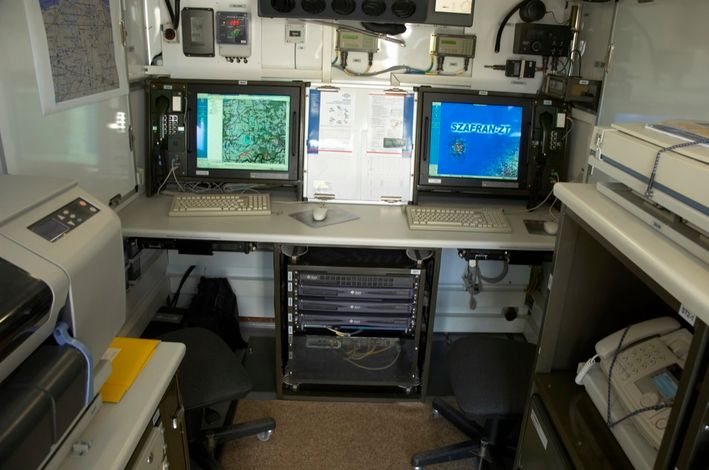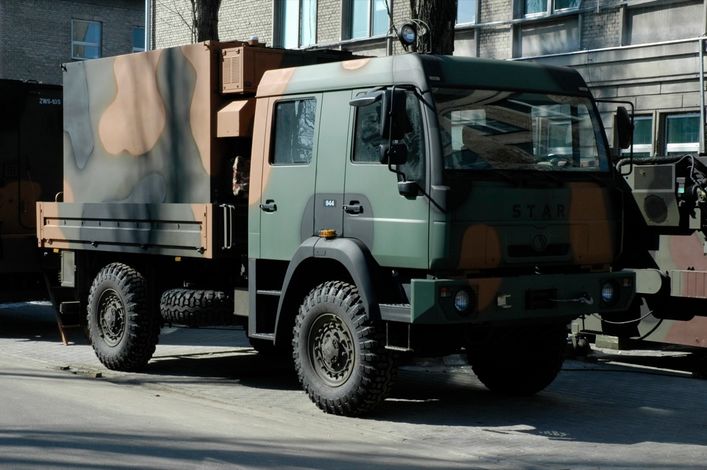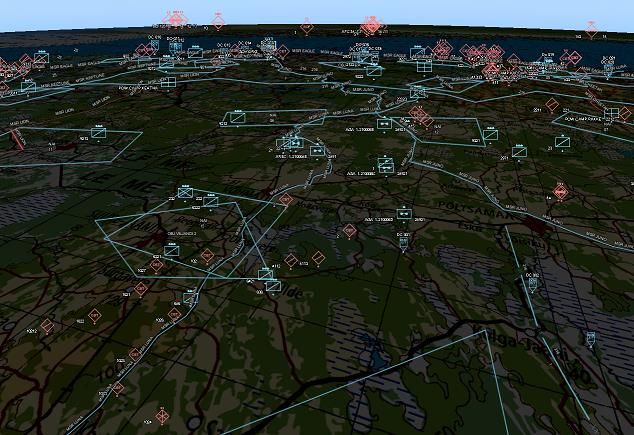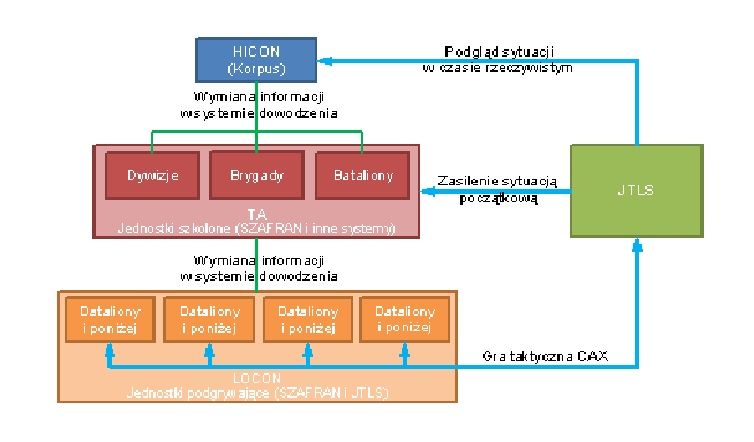Compact Eagle 2015 exercise took place in November 2015, and it has involved, above all, the Multinational Corps North-East, which commanded the NATO forces, during an operation, the scenario of which was based on the commitments related to the NATO Article 5.
Latest version of the Polish SZAFRAN system was the basic command support aid. The system in question has been operated by the Polish Armed Forces since 14 years now. Modernization carried out in line with the order placed by the Multinational Corps North-East, with related works that have been performed by the PIT-RADWAR company, included key elements of the system, such as imaging and command documents components. Thanks to the development carried out, SZAFRAN achieved a higher level of compatibility, within the scope of working together with similar systems of its class. Hence, not only was the exercise important in the light of potential verification of the operational capabilities possessed by the significant collective defence system, coming in the form of the Multinational Corps North East, as the operation was equally relevant when it comes to implementation of the solutions that have been developed by the Polish industry.

SZAFRAN system constituted the foundation for ca. 12 command posts, ca. 600 work stations, for ca. 1250 staff officers. Thanks to the above, the cooperation of the command staff of the Corps with the division, brigades and battalions acting under the jurisdiction of the aforementioned staff, has been secured, by provision of equivalent level of situational awareness for the commanding elements involved in the exercise operations.
SZAFRAN system fully integrated the information related to the operational-tactical situation of the land forces, coming from a variety of sources and a variety of NATO systems (including the Air Force’s system, specialized system dealing with the logistics, operational events) or other Polish suites of this kind, into a single, coherent image. For the first time in history, it has been possible to interconnect, during a real CAX/CPX exercise (Computer Assisted Exercise, Command Post Exercise) the SZAFRAN command support system, with a simulation suite (JTLS – Joint Theater Level Simulation).
Thanks to the above, the involved elements were able to realize the staff tasks directly in the command system, while the simulation operated in the background imitated the operational theatre, allowing the troops in training to focus on planning, and execution of the operations.

According to PIT-RADWAR: “The fact that the trained forces may automatically receive orders and get the reports automatically, directly in the command system, is a breakthrough, unique solution, in the area of CAX/CPX exercises. This marks a new era in the area of CAS/CPX operations”.
This has been possible thanks to the solutions created for the Multinational Corps North-East by PIT-RADWAR, together with the War Games and Simulation Centre of the Polish National Defence University. The staff at the University have developed an original protocol that made it possible to establish a connection between the SZAFRAN and JTLS systems. This protocol outperformed the existing DIS/HLA protocols, both of which have been often used in the simulation process so far.

This advantage was especially visible, within the scope of the data exchange, which technically is practically unattainable, when DIS/HLA protocols are being used. Thanks to the Polish solution, there is an option of exchanging the information in the real time, within the following scope:
- Own, enemy units, civilian and paramilitary organizations, also those which are created throughout the simulation;
- Structure of the units, and related transformation, during the simulation;
- Positioning of the forces and other subjects on the map, implementing changes during the simulation;
- Full status within the scope of logistics, referring to the units and other organizations, and related changes during the simulation;

According to the official release, issued during the Compact Eagle 2015 exercise, the forces were involved in realization of the following tasks:
- The initial exercise operational-tactical situation was developed;
- SZAFRAN and JTLS systems were supplied with the data pertaining the developed situation;
- During the exercise, HICON (Multinational Corps North East) issued the orders and received the reports via the information exchange channel of the command system (marked green in the diagram), according to the structure of the forces;
- During the exercise, TA (the training units) received the orders from HICON and submitted the reports to HICON via the information exchange channel of the command system (marked green in the diagram);
- During the exercise, LOCON (the gaming units) received the orders from the training units and executed the tasks in the JTLS system (blue color on the diagram), and on the basis of the observations in the JTLS diagram they submitted the situational reports to the exercising units in an ongoing manner, via the information exchange channel of the command system (marked green in the diagram);
- Moreover, exercise controllers (HICON) monitored, via the SZAFRAN system, the operational JTLS situation in real time (marked in blue on the diagram). Thus, HICON had access to two current situational data sources - the command channel and the JTLS simulation. This allowed the command to verify the correctness of reports submitted via the SZAFRAN system, comparing them to the situation active in the JTLS.
- SZAFRAN system was supplied with new data on a daily basis at the units, reflecting the tactical tasks that were to be executed by the training forces (blue color on the diagram).
